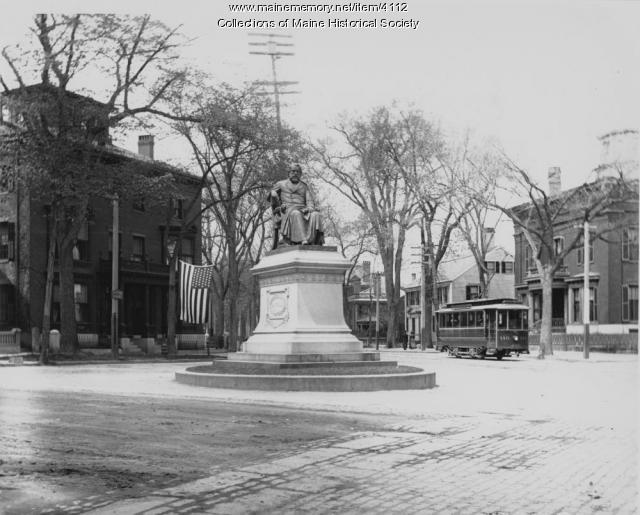Keywords: site plans
Item 4020
City Hall site plan, Portland, 1908
Contributed by: Maine Historical Society Date: 1908 Location: Portland Media: Ink on paper
Item 26036
Contributed by: Maine Bureau of Parks and Lands Date: circa 1842 Location: Prospect Media: Copy of negative
Item 38570
451-461 Congress Street, Portland, 1924
Owner in 1924: Estate of Mary J.E. Clapp Use: Stores & Offices
Item 87293
Dwelling, Xivray Street, Portland, 1924
Owner in 1924: G A Crosman and Sons Company Use: Dwelling
Item 150162
Proposed Memorial Building and Site, Bangor, 1947
Contributed by: Maine Historical Society Date: 1947 Location: Bangor Client: unknown Architect: Eaton W. Tarbell
Item 151537
Westbrook Junior College site plans, Portland, 1938-1950
Contributed by: Maine Historical Society Date: 1938–1950 Location: Portland Client: Westbrook Junior College Architect: John Howard Stevens and John Calvin Stevens II Architects
Exhibit
Sylvan Site: A Model Development
Frederick Wheeler Hinckley, a Portland lawyer and politician, had grand visions of a 200-home development when he began the Sylvan Site in South Portland in 1917. The stock market crash in 1929 put a halt to his plans, but by then he had built 37, no two of which were alike.
Exhibit
Home: The Wadsworth-Longfellow House and Portland - Researching Your Home
"… as 1850 the house was recognized as a historic site. Over the years many people have described the house and left a record of their experiences."
Site Page
Architecture & Landscape database - Plans for the Dwelling House Jos. Briggs, Winthrop, 1884
"Plans for the Dwelling House Jos. Briggs, Winthrop, 1884 Contributed by Maine Historical Society Description Architecture commission for…"
Site Page
City of Portland Planning & Urban Development
View collections, facts, and contact information for this Contributing Partner.
Story
Monument Square 1967
by C. Michael Lewis
The background story and research behind a commissioned painting of Monument Square.
Story
Spiros Droggitis: From Biddeford to Washington DC and back
by Biddeford Cultural & Heritage Center
A Greek family's impact: from the iconic Wonderbar Restaurant to Washington DC
Lesson Plan
What Remains: Learning about Maine Populations through Burial Customs
Grade Level: 6-8
Content Area: English Language Arts, Social Studies, Visual & Performing Arts
This lesson plan will give students an overview of how burial sites and gravestone material culture can assist historians and archaeologists in discovering information about people and migration over time. Students will learn how new scholarship can help to dispel harmful archaeological myths, look into the roles of religion and ethnicity in early Maine and New England immigrant and colonial settlements, and discover how to track changes in population and social values from the 1600s to early 1900s based on gravestone iconography and epitaphs.
Lesson Plan
Portland History: "My Lost Youth" - Longfellow's Portland, Then and Now
Grade Level: 6-8, 9-12
Content Area: English Language Arts, Social Studies
Henry Wadsworth Longfellow loved his boyhood home of Portland, Maine. Born on Fore Street, the family moved to his maternal grandparents' home on Congress Street when Henry was eight months old. While he would go on to Bowdoin College and travel extensively abroad, ultimately living most of his adult years in Cambridge, Massachusetts, he never forgot his beloved Portland.
Years after his childhood, in 1855, he wrote "My Lost Youth" about his undiminished love for and memories of growing up in Portland. This exhibit, using the poem as its focus, will present the Portland of Longfellow's boyhood. In many cases the old photos will be followed by contemporary images of what that site looked like 2004.
Following the exhibit of 68 slides are five suggested lessons that can be adapted for any grade level, 3–12.





















